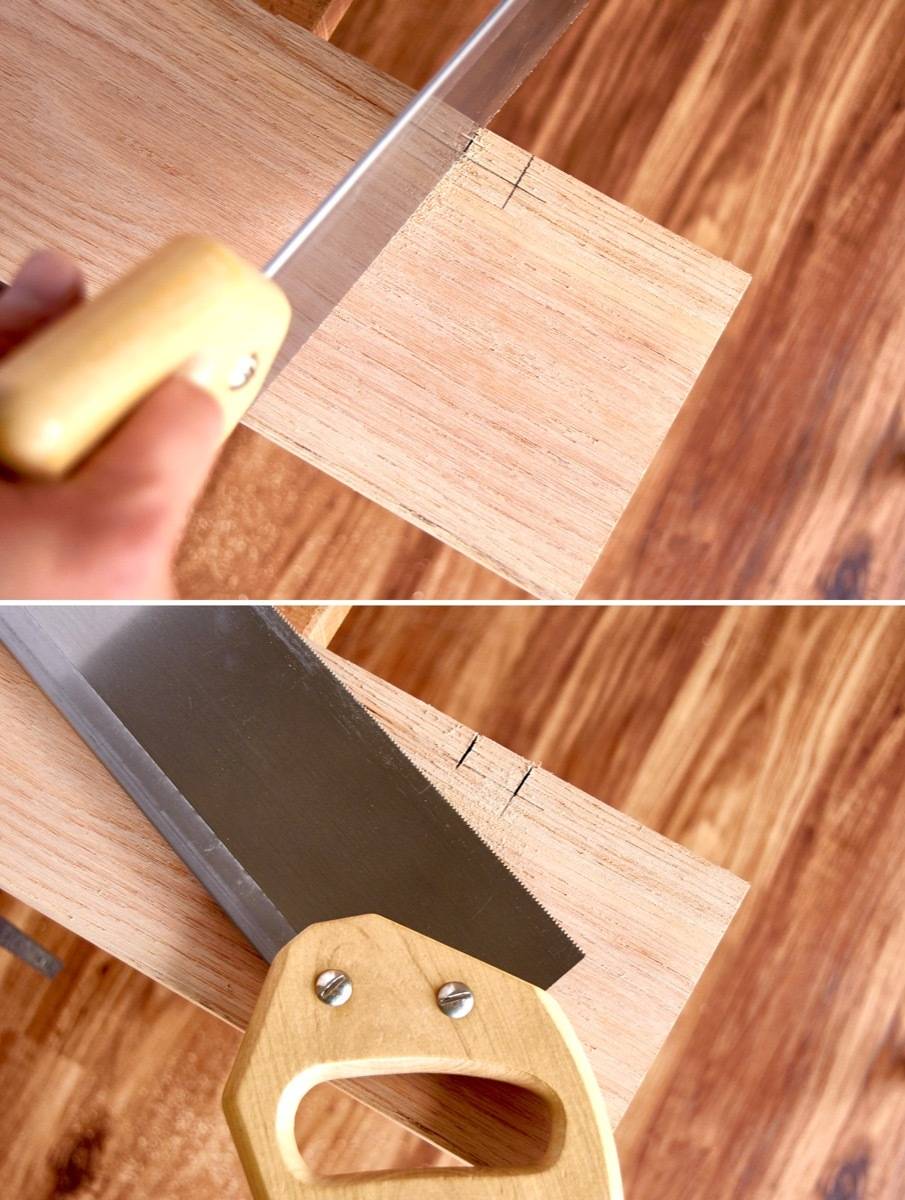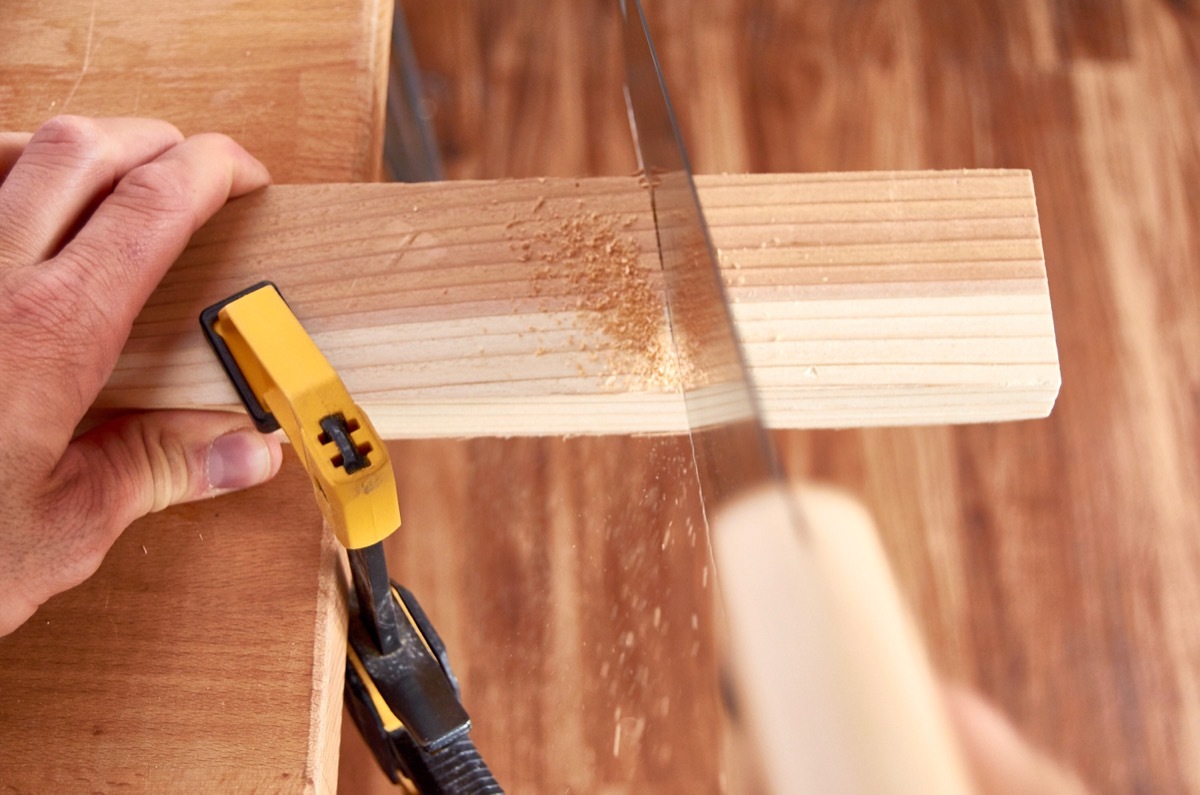When we think “D.I.Y.,” we often imagine tool belts, safety glasses, work gloves, and big, loud, noisy power tools. This isn’t inaccurate, but in order to do plenty of the around-the-house projects, you don’t need to dress like, or own the tools of, construction workers.
Power tools are great, and make quick work of cutting raw materials when you use them regularly. But they’re also expensive, messy, and have an inherent risk to them. Often, the same task can be accomplished with a simple hand saw. It will require a little more labor, but cost only 10-20% of the powered equivalent, take up much less space to store, and be safer to use. Here are a few of the most useful hand saws:
1. The Back Saw

The back saw takes its name from the reinforced spine that runs across back or top of the blade, which ensures it stays straight during cutting. This makes the backsaw extremely accurate, producing nice clean cuts. It’s relatively small size also contributes to control and accuracy, making this the perfect all around saw for lots of creative and home improvement tasks, such as cutting wood to length, or simple notches or joinery in both hard and soft wood. Coupled with a miter box, this saw can produce extremely accurate cuts at 45° and 90°.

2. The Panel Saw

This is the style that most recalls that classic cartoon/clip art/emoji-style image of “saw.” Its relatively long length and low number of teeth-per-inch allow it to make quick work of cutting larger material to size, say a Douglas Fir 2×6, or a piece of 1×12 pine. It performs the work equivalent of a circular saw, making it a safe and a very affordable option for small projects around the house: replacing a step, framing out a window, etc.

3. The Coping Saw

The coping saw takes its name from its ability to cope – joining two irregular, non-square faces together. Traditionally, this happens when joining molding: the coping saw cuts out the profile of the molding, allowing for a tight inside corner joint with a finished look.
But, in addition to coping, it’s thin, rotatable blade allows it to make a wide variety of cuts. This is the tool to reach for when you want to cut out intricate shapes or curves. This has great creative potential, making the coping saw one of the best DIY deals out there.

4. The Hack Saw

The hack saw uses a frame to hold a thin, narrow blade under tension. They’re best for cutting non-wood materials, such as steel, aluminum, brass, and PVC. (Though a bi-metal blade will easily cut a dowel rod or thin wood in a pinch.) They work great for around the house projects like cutting conduit or plumbing pipe, or installing a new closet rod. A good one will last for life, provided you swap out the blade when necessary. A great investment to have around so it’s there when you need it.

5. The Jab Saw

The jab saw, also known as a “keyhole saw” excels when you need to make awkward cuts in a variety of building materials. It’s jabbing feature allows you to start a cut in a standing structure. Common uses are cutting recesses for electrical boxes to install a new lightswitch or outlet, enlarging a hole, or cutting a curve.

6. Flush Cut Saw

The flush cut saw is designed to cut materials flush with a surface without scratching. The teeth are only set to one side, so you can run the saw along a finished surface, like a painted wall or wooden cabinet side, without harming the surround material. It also makes for a great, flexible handsaw to clean up rougher cut shapes for craft and creative projects, since you can rest the blade against an existing surface to register it, removing material to the line.

This post is part of our new tool school series!
This post is sponsored by The Home Depot. All opinions are mine alone. Thanks for reading, and for supporting the brands that make Curbly possible.
I acknowledge that The Home Depot is partnering with me to participate in the ProSpective 2018 Campaign. As a part of the Program, I am receiving compensation in the form of products and services, for the purpose of promoting The Home Depot. All expressed opinions and experiences are my own words. My post complies with the Word Of Mouth Marketing Association (WOMMA) Ethics Code and applicable Federal Trade Commission guidelines.

Great run down. As someone who is going to be purchasing a home soon, I’m in dire need of some serious DIY schooling and this is beyond helpful. I have only one of these saws (the hacksaw) and have been using it for cutting all sorts of wood! I need to invest in upgrading my arsenal.
@jeff great to hear it! Good luck with the new house.
Thank you that was informative.
There is a tool for every job and knowing which to use is important.